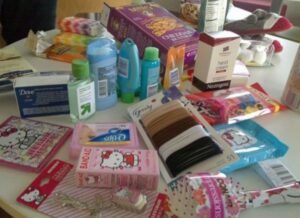5 Essentials for a Health-Conscious Home Emergency Kit

Preparedness requires that you imagine and rehearse those first 72 hours after a natural disaster or emergency. How can you best prepare for a situation that keeps you out of your house, or if you have to leave on short notice? Having a plan and supply kit is essential to your safety in case of a disaster. Pre-assembled emergency kits are a convenient start, but getting re-usable, eco-friendly supplies of your own might be a wiser investment. Here are some health-conscious and environmentally friendly options for the five basics of a home emergency kit.
Food
Shelf life and minimal preparation are important, but you don’t have to pack preservative-laden readymade meals just because they store the longest. You can dehydrate or can your own food for the short term, or try out some of Health Ranger’s Storable Organics for long-term storable superfoods like Flax and Chia seeds, Himalayan salt, and organic pastas.
Water
Plan for one gallon of water per person per day for at least three days, for drinking and sanitation. Store pure water in BPA-free containers for long term storage. Life Without Plastic offers stainless steel water dispensers that are suitable for storage and durable enough to be heirlooms.
Shelter
Shelter can be as minimal as a tarp or as elaborate as a prefab housing unit. For the purposes of a home kit, synthetic fabric tents work well because they are light and waterproof, but are often made with PVC or perfluorochemicals (PFC). Alternatively you could get a used natural fiber tent from the surplus store or make your own pup tent from old canvas or other compact materials.
First Aid
There are hundreds of first aid kits to choose from – be sure to get one that can take care of minor injuries for your whole family. In addition to conventional supplies, you can assemble an herbal first aid kit as a learning experience in treating common conditions naturally. Get familiar with the indispensable essential oils and extracts that offer protection and relief, such as aloe vera gel, eucalyptus and lavender oils, and calendula salve.
Tools and Supplies
Your kit should include hygiene products like towlettes and toothpaste; in packing natural products, be sure to check your kit every few months for expired goods. Pack products that you like and can use before the expiration, whether there’s a disaster or not.
While there are not so many natural alternatives to the basic tools you’ll need, assembling a tool kit can be another great way to introduce an emergency plan to your family or housemates. Gather some all-purpose tools like a fixed blade knife, manual can opener, sturdy cord, compact saw, solar phone charger, and wrenches and pliers to turn off utilities. Also include some signaling and navigation tools like a compass, flashlight, and flares. Picking up a new tool or skill can be a confidence-booster that adds to your creative arsenal and puts your mind at ease.
This list is by no means inclusive. There are many resources to help get an emergency plan and supplies in place, such as The Survival Mom, the Red Cross and Ready.gov. Find out what emergency supplies are suited to your area and lifestyle, and more importantly, get your loved ones involved! You’ll be glad you had the foresight.
Keep in touch with Erin on Twitter: @ErinPie
image: tagawa

